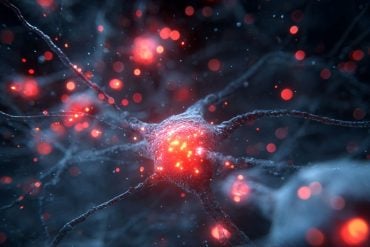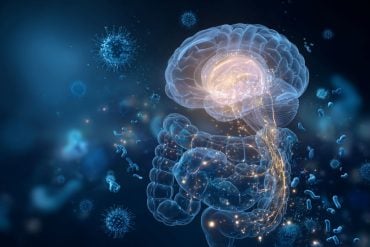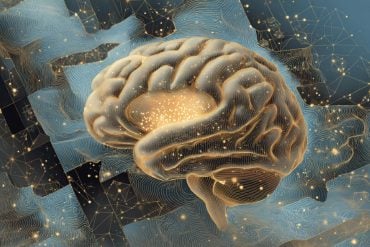Summary: When it comes to the brain, there is “no fixed normal”, researchers say.
Source: Cell Press.
There’s nothing wrong with being a little weird. Because we think of psychological disorders on a continuum, we may worry when our own ways of thinking and behaving don’t match up with our idealized notion of health. But some variability can be healthy and even adaptive, say researchers in a review published February 20th in Trends in Cognitive Sciences, even though it can also complicate attempts to identify standardized markers of pathology.
“I would argue that there is no fixed normal,” says clinical psychologist and senior author Avram Holmes of Yale University. “There’s a level of variability in every one of our behaviors.” Healthy variation is the raw material that natural selection feeds on, but there are plenty of reasons why evolution might not arrive at one isolated perfect version of a trait or behavior. “Any behavior is neither solely negative or solely positive. There are potential benefits for both, depending on the context you’re placed in,” he says.
For instance, impulsive sensation seeking, a willingness to take risks in order to have new and exciting experiences that has its roots in our evolutionary history as foragers, is often thought of negatively. Increased sensation seeking is associated with things like substance abuse, criminality, risky sexual behavior, and physical injury. “But if you flip it on its head and look at potential positive outcomes, those same individuals may also thrive in complex and bustling environments where it’s appropriate for them to take risks and seek thrills,” he says. They often have more social support, are more outgoing, and exercise more.
The same is true for anxiety. “You might be more inhibited in social situations and you may find it harder to build friendships,” Holmes says. “However, that same anxiety, if you think of it in a workplace setting, is what motivates you to prepare for a big presentation. If you’re in school, that’s the same anxiety that motivates you to study for an exam.” He also notes that we have more control over the contexts we’re in than we tend to think we do, which means that it’s very possible to end up in an environment that favors the way our brains work.
But if variation in any given trait is normal, that does raise questions about what makes for disordered behavior, which he stresses is very much a real phenomenon. “It may be the case that if you focus on a single phenotype, there isn’t a specific line that separates health from disease, and that we must consider multiple phenotypes simultaneously,” he says.
This makes it much more complicated to try to find biomarkers for psychological illness, something that Holmes has worked on throughout his career. The usual approach is to break down a disorder into its component pieces, find a specific associated genetic marker or biological process for a certain piece, and then look for that marker or process in the general population to see if it can predict the disorder. The problem, he says, is that “one single phenotype in isolation is never going to be necessary nor sufficient to cause an illness.”

“What we want to try to do is build multivariate approaches that consider multiple domains of human behavior simultaneously, to see if we can boost our power in predicting eventual outcomes for folks,” he says. Large, open-source datasets have been collected in recent years that can be used in these efforts, but Holmes notes that the work will almost certainly require collaboration between different labs and institutions–some of which is already underway.
What this does mean, though, is that it really isn’t appropriate to think of ourselves in terms of a single trait that’s either good or bad, healthy or unhealthy. “This is a broader issue with our society,” he says, “but we’re all striving towards some artificial, archetypal ideal, whether it’s physical appearance or youthfulness or intelligence or personality. But we need to recognize the importance of variability, both in ourselves and in the people around us. Because it does serve an adaptive purpose in our lives.”
Funding: This work was supported by the National Institute of Mental Health.
Source: Cell Press
Publisher: Organized by NeuroscienceNews.com.
Image Source: NeuroscienceNews.com image is credited to Holmes et al./Trends in Cognitive Sciences.
Original Research: Abstract in Trends in Cognitive Sciences.
DOI:10.1016/j.tics.2017.12.006
[cbtabs][cbtab title=”MLA”]Cell Press “When it Comes to Our Brains, There’s No Such Thing as Normal.” NeuroscienceNews. NeuroscienceNews, 20 February 2018.
< https://neurosciencenews.com/brain-normal-8527/>.[/cbtab][cbtab title=”APA”]Cell Press (2018, February 20). When it Comes to Our Brains, There’s No Such Thing as Normal. NeuroscienceNews. Retrieved February 20, 2018 from https://neurosciencenews.com/brain-normal-8527/[/cbtab][cbtab title=”Chicago”]Cell Press “When it Comes to Our Brains, There’s No Such Thing as Normal.” https://neurosciencenews.com/brain-normal-8527/ (accessed February 20, 2018).[/cbtab][/cbtabs]
Abstract
The Myth of Optimality in Clinical Neuroscience
Implicit in modern dimensional theories of psychiatric illness is the assumption that population variability and illness vulnerability are interchangeable constructs.
Mounting evidence suggests that healthy variation is ubiquitous in natural populations, and must be interpreted in terms of cost–benefit tradeoffs.
Psychiatric illnesses arise through a web of interactions linking brain function, behavior, and a lifetime of experiences. Research on illness etiology will only progress through the collection of comprehensive phenomic-level datasets.
Large-scale collaborative efforts have begun to generate broad phenotypic batteries that encompass environmental and contextual factors, brain structure and function, as well as multiple domains of cognition, behavior, and genetics. These datasets hold great potential for clinical researchers seeking to map links across diverse neural and cognitive states.
Clear evidence supports a dimensional view of psychiatric illness. Within this framework the expression of disorder-relevant phenotypes is often interpreted as a breakdown or departure from normal brain function. Conversely, health is reified, conceptualized as possessing a single ideal state. We challenge this concept here, arguing that there is no universally optimal profile of brain functioning. The evolutionary forces that shape our species select for a staggering diversity of human behaviors. To support our position we highlight pervasive population-level variability within large-scale functional networks and discrete circuits. We propose that, instead of examining behaviors in isolation, psychiatric illnesses can be best understood through the study of domains of functioning and associated multivariate patterns of variation across distributed brain systems.







